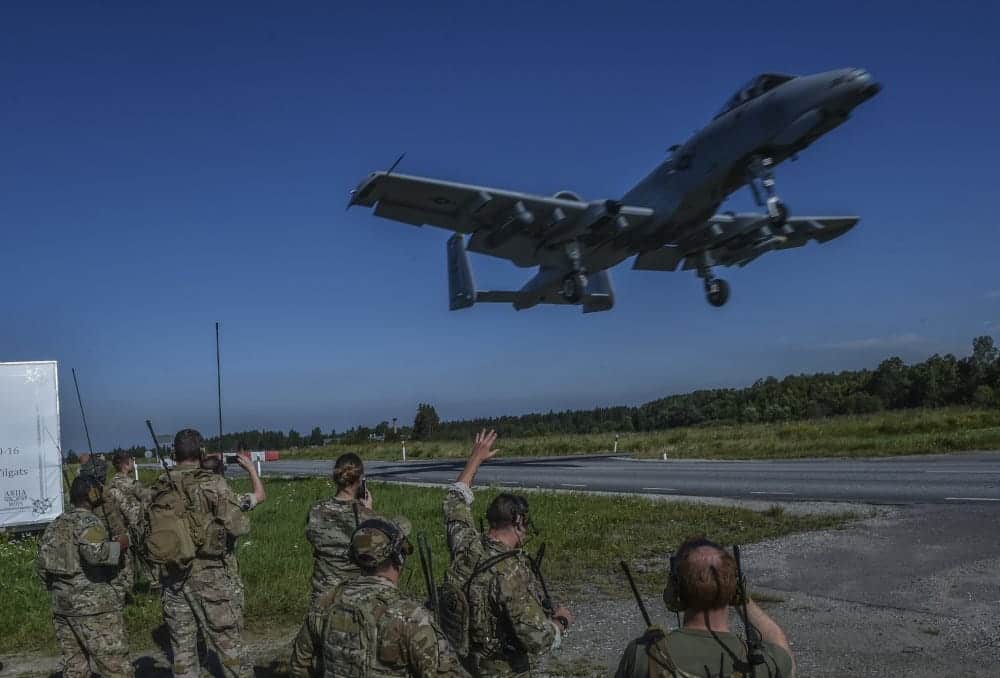ACE Operations: Getting there is half the fight
- By Stavros Atlamazoglou
Share This Article

ACE operations, short for Agile Combat Employment, require a unit to quickly mobilize and deploy its fighter jets across a region, such as the Indo-Pacific area of operations.
Having the ability to present a flexible theater posture that isn’t tied down to a few major bases but that can move fluidly and be adjusted depending on the operational circumstances on the ground is paramount for a lethal force that seeks to counter a near-peer adversary in the 21st century.
The National Defense Strategy that came out last year specifically mentions the need for the Pentagon to develop a lethal and agile force posture. U.S. ground, naval, and air forces need to be able to deploy rapidly in an area and conduct dispersed, sustained operations if need be. That means conducting operations from what would normally be considered austere locations and airstrips, as large military bases would quickly become targets in a near-peer conflict.

Related: America wanted vertical take-off fighters for a nuclear WWIII
For example, in the event of a conflict with China, Air Force units operating in the Indo-Pacific would need to disperse their aircraft to prevent a catastrophic scenario in which a Chinese missile attack or an air raid takes out a large number of aircraft on the ground. Such an attack doesn’t necessarily even have to destroy the aircraft themselves to render them combat ineffective.
A few well-placed munitions can seriously damage or destroy the runways that the aircraft need to take off from and land on, making the aircraft useless without the need for a direct hit. Although the Air Force is seeking ways to minimize the repair time on damaged runways, a partially or completely destroyed airstrip would most likely ground any aircraft on the base until those repairs could be made.
This concern is nothing new, and in fact, the the U.S. military once pursued the development of tail-sitting fighters that would take-off and land in a nose-up position, using their massive props to hover like helicopters, thus eliminating the need for runways. This approach proved impractical, but the likelihood of attacks on airbases in the initial volleys of a new World War have only gone up since then.

By dispersing aircraft and quickly moving them around a theater of operations, the Air Force is increasing their survivability and making it harder for an adversary to take them out. This approach is both more cost effective and practical than developing specialized aircraft with no need for airstrips.
But aircraft need more than just an airstrip. They also need ammo and fuel to operate, and that’s where the FARP concept comes in.
Read more from Sandboxx News
- What it means to be an Apache pilot, according to 6 Apache pilots
- Drones will compete with crewed aircraft for AFSOC Armed Overwatch Program
- That time an F-16 pilot saved ground troops with a sonic boom
- How the Air Force plans to re-arm fighters in the streets in a near-peer war
- US SOCOM’s big plans for its new fleet of small attack planes
Related Posts
Sandboxx News Merch
-

A-10 ‘Thunderbolt Power’ Framed Poster
$45.00 – $111.00 Select options This product has multiple variants. The options may be chosen on the product page -

‘Sandboxx News’ Camo Trucker Hat
$29.00 Select options This product has multiple variants. The options may be chosen on the product page
Stavros Atlamazoglou
Greek Army veteran (National service with 575th Marines Battalion and Army HQ). Johns Hopkins University. You will usually find him on the top of a mountain admiring the view and wondering how he got there.
Related to: Airpower, Military Affairs

The Long Range Desert Group and the birth of special operations around the world

SDV: The secret weapon of the Navy SEAL Teams

C-5 Super Galaxy: Anywhere in the world in 24 hours

Ukraine peace negotiations don’t look promising
Sandboxx News
-

‘Sandboxx News’ Trucker Cap
$27.00 Select options This product has multiple variants. The options may be chosen on the product page -

‘AirPower’ Classic Hoodie
$46.00 – $48.00 Select options This product has multiple variants. The options may be chosen on the product page -

‘AirPower’ Golf Rope Hat
$31.00 Select options This product has multiple variants. The options may be chosen on the product page -

‘Sandboxx News’ Dad Hat
$27.00 Select options This product has multiple variants. The options may be chosen on the product page
